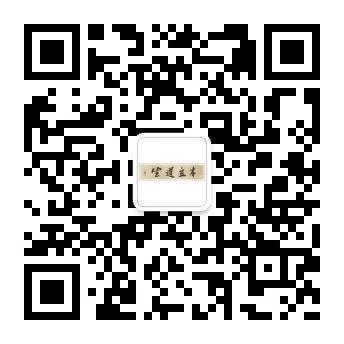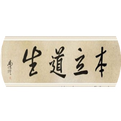This article serves as a general overview of the entire book, covering a wide range of topics including the etiology, pathogenesis, diagnosis, treatment, prevention of diseases, and the impact of seasonal climate on the human Zang-Fu organs.
There are a total of seventeen articles in this section, with the first, second, seventh, eighth, and tenth articles discussing the causes of disease from a holistic perspective, the patterns of transmission, the influence of climate on the human body, and proposing the viewpoint of “treating the unill rather than the ill,” emphasizing the importance of disease prevention over treatment.
The third to sixth articles elaborate on various methods of inspection and auscultation in diagnosing diseases.
The ninth, eleventh, and twelfth articles discuss how pulse diagnosis can determine the nature and location of various diseases and their prognosis.
The thirteenth article describes methods of classifying diseases.
The fourteenth to seventeenth articles clarify the general principles and methods for treating various diseases.
Articles: 3, 4, 5, 6
3. The question is asked: The patient has a complexion visible on the face, and I wish to hear what it says. The master replied: If the tip of the nose is blue, and there is abdominal pain, one who suffers from bitter cold will die (one version states abdominal cold and bitter pain will lead to death). If the tip of the nose is slightly black, there is water qi; if yellow, there is cold in the chest; if white, it indicates blood loss. If there is slight redness at an inappropriate time, it indicates death. If the eyes are perfectly round, it indicates convulsions, which are untreatable. Blue indicates pain, black indicates labor, red indicates wind, yellow indicates constipation, and bright colors indicate retained fluids.
4. The master said: If the patient’s voice is quiet and they are prone to sudden exclamations, it indicates a disease in the joints; if the voice is hoarse and unclear, it indicates a disease in the heart and diaphragm; if the voice is chirping, thin, and long, it indicates a disease in the head (one version states pain).
5. The master said: If the breath shakes the shoulders, it indicates a firm heart; if the breath draws up the qi in the chest, it indicates a cough; if the breath is short and the mouth is open, it indicates lung atrophy with saliva.
6. The master said: If the breath is slightly rapid, the disease is in the middle jiao, it is full, and it can be cured immediately; if it is deficient, it cannot be treated. In the upper jiao, the breath is rapid; in the lower jiao, the breath is distant, both of which are difficult to treat. If the breath shakes and vibrates, it is untreatable.
—— Excerpt from “Liu Duzhou’s Commentary on the Essentials of the Golden Chamber”
3. The question is asked: The patient has a complexion visible on the face, and I wish to hear what it says. The master replied: If the tip of the nose is blue, and there is abdominal pain, one who suffers from bitter cold will die (one version states abdominal cold and bitter pain will lead to death). If the tip of the nose is slightly black, there is water qi; if yellow, there is cold in the chest; if white, it indicates blood loss. If there is slight redness at an inappropriate time, it indicates death. If the eyes are perfectly round, it indicates convulsions, which are untreatable. Blue indicates pain, black indicates labor, red indicates wind, yellow indicates constipation, and bright colors indicate retained fluids.
[Interpretation]
This article discusses the method of inspection by a skilled practitioner. The physician can determine the location and nature of the disease by observing the patient’s facial complexion, as the essence and blood are stored in the five Zang organs and manifest externally on the face through the meridians and blood vessels.
If the luster and color of the corresponding areas of the face change, it can reflect diseases of the five Zang organs and six Fu organs. For example, if the nose, which corresponds to the spleen, appears blue and there is abdominal pain, it indicates that liver evil is invading the spleen; if there is also abdominal cramping pain and bitter cold, it indicates a severe condition of spleen yang deficiency and cold accumulation. If the nose appears slightly black, indicating water qi, it suggests kidney yang deficiency and cold water accumulation, thus indicating water qi disease. Yellow represents the earth element, corresponding to the spleen; if the facial color is yellow and dark, it indicates spleen qi deficiency, where the essence of food cannot be distributed, leading to water retention in the chest, thus indicating cold in the chest. If the facial color is white, it indicates blood loss; if a person loses blood, the face may appear slightly red, especially in winter, which is called “color appearing at an inappropriate time,” indicating damage to both yin and yang, with a prognosis that is not good. Additionally, if there is more blood loss, yin is exhausted, and blood is lost, which cannot nourish the eyes and muscles, leading to the eyes appearing perfectly round and unable to close, like fish eyes, while also exhibiting convulsions, indicating depletion of liver yin, which is untreatable.
“Blue indicates pain” because blue indicates that the blood vessels are congested and not flowing smoothly, thus blue indicates pain. “Black indicates labor” because black is the color of water, corresponding to the kidneys; if kidney essence is insufficient, yang is deficient and cannot warm, leading to heavy cold, thus black indicates kidney labor disease. “Red indicates wind” because wind is a yang evil, often arising from heat, thus red indicates wind. “Yellow indicates constipation” because a yellow face indicates spleen deficiency and inability to transport fluids, leading to constipation. “Bright colors indicate retained fluids” because a bright facial color indicates that water is retained internally, overflowing to the skin surface, leading to facial edema, thus showing a bright and lustrous color.
4. The master said: If the patient’s voice is quiet and they are prone to sudden exclamations, it indicates a disease in the joints; if the voice is hoarse and unclear, it indicates a disease in the heart and diaphragm; if the voice is chirping, thin, and long, it indicates a disease in the head (one version states pain).
[Interpretation]
This article discusses the application of auscultation in clinical practice. If the patient has cold and blood stasis in the joints, the joints are not functioning well, and if they remain still, the condition is mild; hence, the voice is quiet, but if they move and experience pain, they are prone to sudden exclamations. If phlegm and dampness obstruct the heart and diaphragm, causing qi stagnation, the patient’s voice will be hoarse and unclear. If the patient’s voice is chirping, thin, and long, it indicates a disease in the head, as raising the voice will vibrate the head, causing more pain, hence they do not dare to speak loudly.
5. The master said: If the breath shakes the shoulders, it indicates a firm heart; if the breath draws up the qi in the chest, it indicates a cough; if the breath is short and the mouth is open, it indicates lung atrophy with saliva.
[Interpretation]
This article discusses the method of diagnosing diseases by observing changes in breathing patterns. The breath refers to respiration. If the breath shakes the shoulders, it indicates difficulty in breathing, hence the shoulders are raised. “Firm heart” refers to the presence of evil qi obstructing the heart, making it firm and causing shortness of breath. If the breath draws up qi in the chest and causes coughing, it indicates that evil qi is obstructing the lungs; if the breath is short and the mouth is open, it indicates lung atrophy, where fluids do not circulate properly, leading to the expulsion of saliva.
6. The master said: If the breath is slightly rapid, the disease is in the middle jiao, it is full, and it can be cured immediately; if it is deficient, it cannot be treated. In the upper jiao, the breath is rapid; in the lower jiao, the breath is distant, both of which are difficult to treat. If the breath shakes and vibrates, it is untreatable.
[Interpretation]
This article discusses how to distinguish the location of the disease by observing the breath and assess the prognosis. If the breath is slightly rapid, it indicates short inhalation. If the disease is caused by full evil in the middle jiao, the mechanism is that evil qi obstructs the middle jiao, affecting the lung qi, leading to the disease in the middle jiao, and it can be treated immediately. Once the fullness is removed, the qi can flow freely, and breathing will return to normal, hence it is said, “can be cured immediately.” If the breath is rapid not due to full evil in the middle jiao but is a deficiency, as stated in the “Heart Classic,” it is due to qi that has lost its root and will soon disperse, hence it cannot be treated. If the middle jiao is full but also has a deficiency, treating it will harm the right qi, and not treating it will leave the evil with no outlet, thus it is also a difficult condition to treat. In the upper jiao, it mainly refers to diseases in the lungs, where rapid breathing is caused by severe lung qi deficiency; in the lower jiao, it mainly refers to diseases in the kidneys, where distant breathing is caused by exhaustion of original qi, and the kidneys cannot retain qi. If the breath shakes and vibrates throughout the body, it indicates extreme weakness, where the form and qi cannot be sustained, thus it is said to be untreatable.
From the text, the word “deficiency” indicates that any deficiency condition that presents with respiratory changes, regardless of whether the change is in the upper or lower body, is generally a difficult condition to treat.
— Excerpt from “Li Jinyong’s Lecture on the Essentials of the Golden Chamber” (5th Edition)
Proofread by │ Pu Yangzi


